The Foodshed Challenge
Eat local.
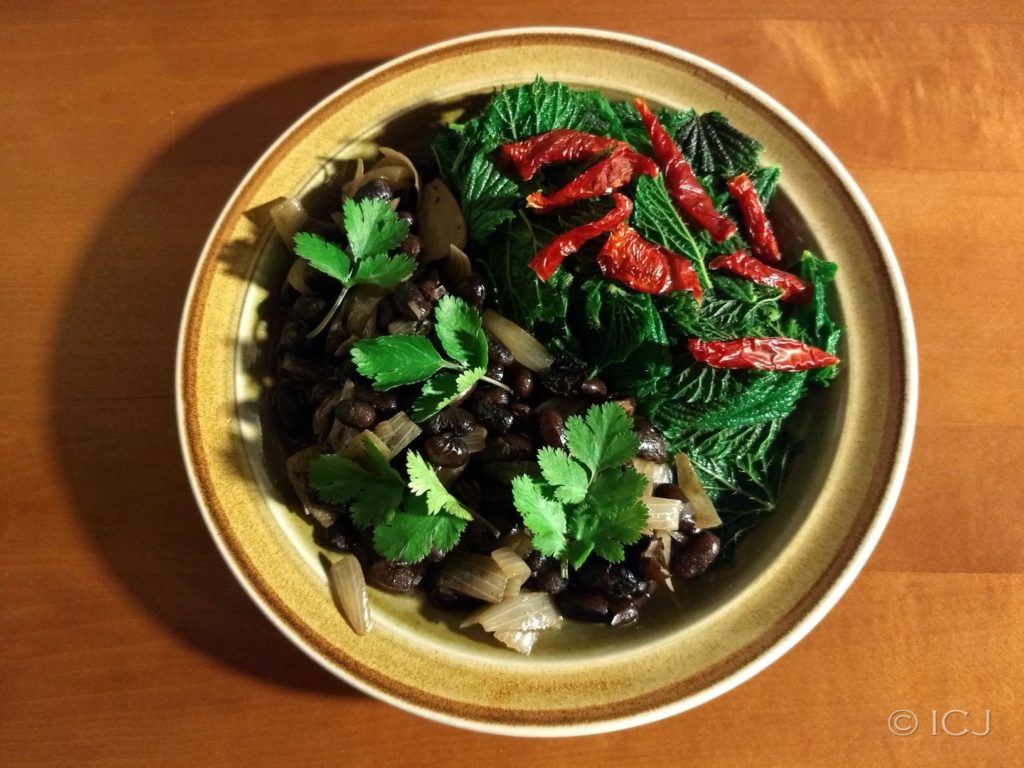
Where did your last meal come from? Who made it? How long did it take to grow? How long since it was alive? Did it live well?
Living well, and giving good lives to the beings that sustain me, is the core of why I have chosen to undertake homesteading. Living on the land. Living off the land. (Living with the land? Prepositional phrases are strange if you start thinking about them.) Making my life’s work the thriving of a particular place. Wendell Berry has much to say about love being particular. He is among my foremost literary mentors and will be mentioned often here.
Neighborliness is a part of that. Maintaining generous habitat by which to allow good lives for the creatures who were here before me and who would persist merrily without a human around. Providing nourishment for fellow humans, distributing my surplus via hospitality, barter, and sale. Removing eyesores—decades of garbage, vehicles and buildings fallen into woeful disrepair. Creating beauty. I want the air and water to be cleaner having passed over or through my little patch of Earth. I want the soil and vegetation to be richer for my sojourn here, that it may better nourish others after I am gone.
Ultimately we are all living off the land. If not our own, then someone else’s. The question is—what shape is the land in? is the land still living?—after we consume as we do.
A year ago April 1 I came to live here full time. I observed the anniversary by sustaining myself for a whole day with homegrown and foraged food. The exercise was immensely satisfying to mind and spirit. I daresay also to tastebuds. Calorie content, sustaining the physical activity level and body temperature that a typical “day off” (=not at sedentary wage-paying gig) requires of me, not so much. I desperately craved bread and cheese. Half an hour after filling up mostly on fiber I was hungry again.
I intend indefinitely to eat Homegrown on roughly the first of each month as celebration of the yield, motivation to improve what I can grow and preserve, and a qualitative way of documenting progress. Allowable imports on Homegrown days: coffee, olive oil, salt, and yeast. On roughly the 11th and 21st of the month I will expand the foodshed to Lewis County and Washington State respectively. Allowable imports on those days include the Homegrown list plus: chocolate, butter, maple syrup, and spices that do not grow in WA.
Sometimes I will just list the ingredients and photograph the prepared meals. Sometimes I will embellish. There is nothing simple about living off the land. It is hella complicated. If you spend too much time blogging you will not eat very well.
BREAKFAST: Steamed Rhubarb and Apple, Coffee
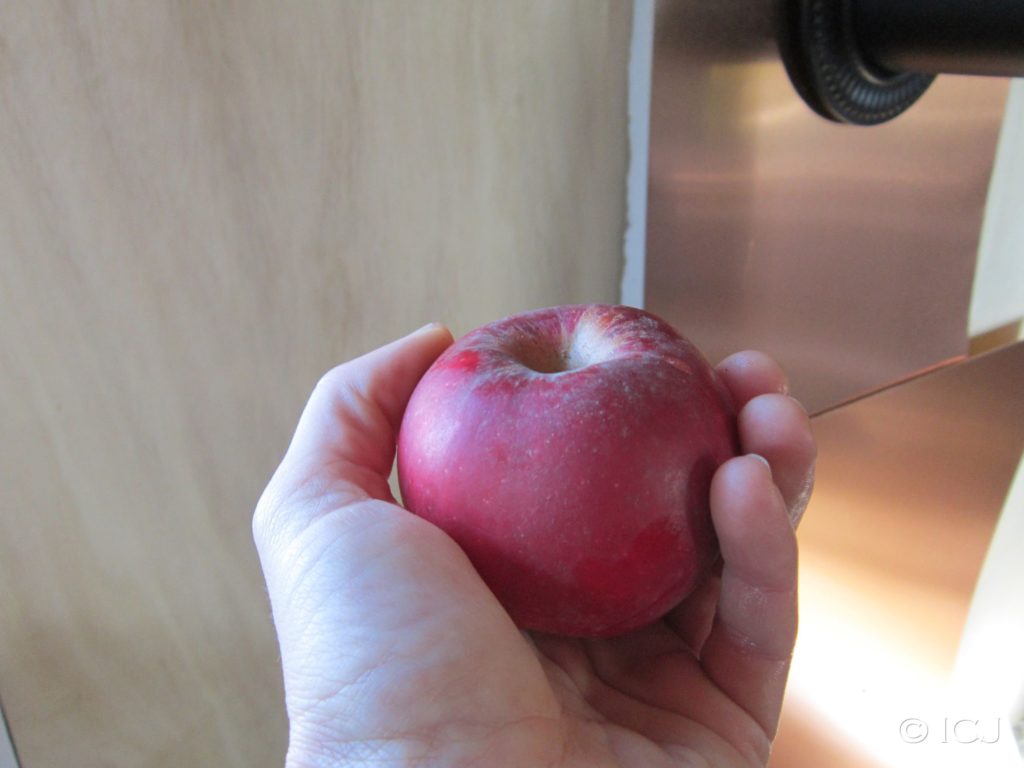
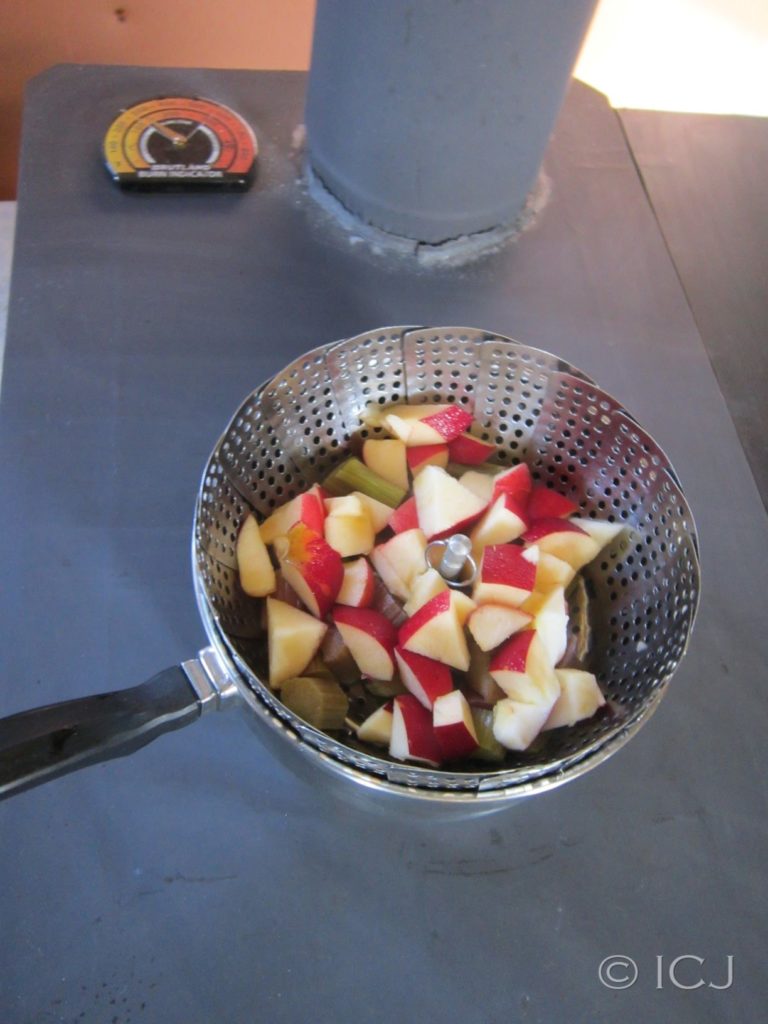
The rhubarb came from Judy’s garden. (Judy and her garden are a story for another day.) I dug up and divided an ancient plant from behind her garage. One crown had a basketball-sized root mass with any number of new shoots trapped below ground vying for space. I planted it here in March 2019. Spring of ’20 I froze about a gallon of it cubed on cookie sheets and stored in a Ziploc bag. I still have a few cups left. Before the end of the month I’ll pull the first stalk of ’21.
Apples come from Kazakhstan originally. The apple tree to which I belong is about 50 years old. It gets its own post someday. Thanks to the root cellar that has been here about as long as the apple tree (yet another story) I have a few fresh apples still edible nearly 6 months after harvest.
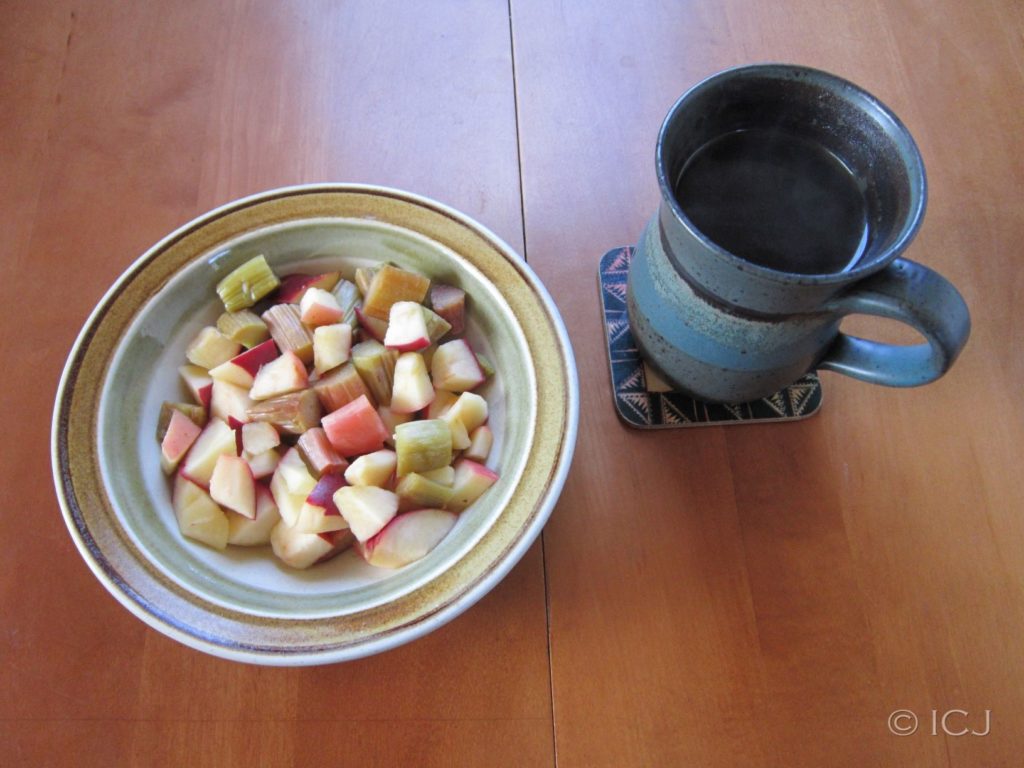
LUNCH: Raw Kale Salad with Sorrel and Blackberries, Horsetail Tea
Thanks to heavy barricades, dogged evasion tactics (nomadic existence), and the occasional tarp coverage, a few kale plants survived a year beleaguered by slugs, mice, bunnies, and temps in the low 20’s. Mixture of Lacinato and Red Russian. Both planted from seed, the Red Russian last summer in pots until they were 4” high when they went in the ground late fall due to how few of the Lacinato survived last spring being direct seeded. I moved the last two Lacinato into pots when they were 2-3” high and in pots they will remain as long as they are putting on edible leaves.
Sheep sorrel is a new discovery that I ran across in a foraging book about a month ago when I was flipping through to read up on nettles. I had pulled hundreds of clumps of it out of my raspberry beds last year not knowing what it was. It tastes just like wood sorrel, which I had previously foraged, but looks completely different and has a meatier leaf. Rather zingy, strong lemon flavor. Better in combination than alone.
Himalayan blackberries will survive the apocalypse along with the cockroaches, and that’s OK. I froze 14 lbs of them Aug-Sept of ’20. Just from my land! And blackberries are only about 2% of the vegetation here. Nearly 13 years in to living in WA I am still not quite over the fact that blackberries are free. I have spent at least a dozen hours in the past year cutting them back and extracting them from places they are unwanted, like the apple tree. I don’t really mind. The grass grows faster than they do in the spring and keeps them from taking over the world.
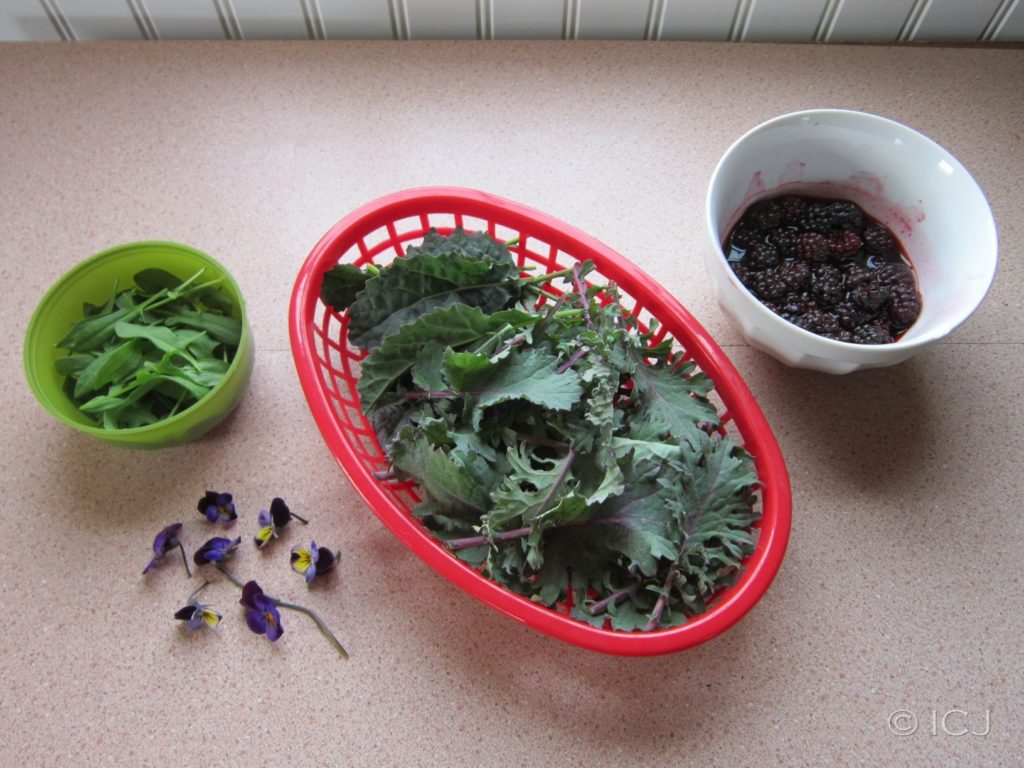
Salad dressing—Light drizzle of olive oil and a sprinkle of salt, plus some Johnny Jump-Ups for decoration. The seeds of those hitched a ride in the soil with the strawberries which I grew for two years in a raised bed at Judy’s before transplanting them here.
Beverage—Horsetail is a throwback to long before the Holocene epoch, dating back perhaps several hundred million years. Besides being one of the oldest plant species living among us it is one of the richest sources of bioavailable minerals for either soil building or medicinal and cosmetic use. It is especially good for hair and nail health. It’s a problem on pasture because grazing animals love it and the fresh leaves contain an enzyme that destroys B vitamins. Too much can cause a serious deficiency. Dried and steeped long in boiled water or yanked in its prime and tossed on the compost heap, it’s all nourishment for animal and plant alike.
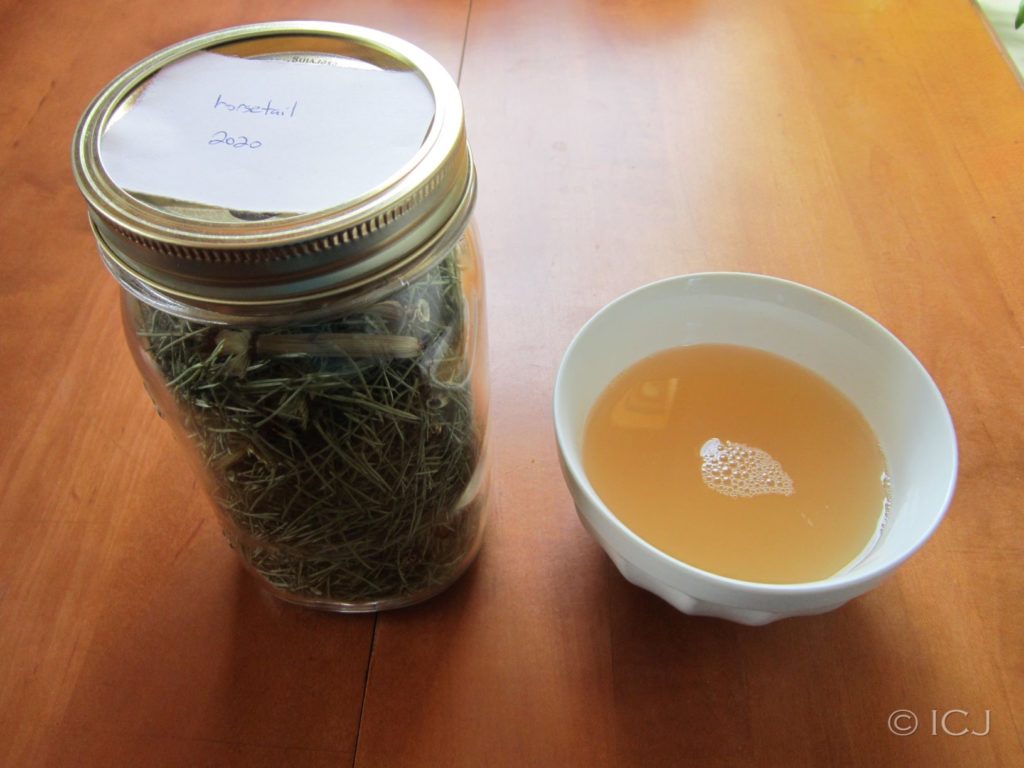
Horsetail tea doesn’t taste unpleasant alone, just mildly medicinal and even a little metallic. Better mixed with fruit juice or some other herbal tea. This time I mixed it with the juice from the steamed apples and rhubarb and served it cold.
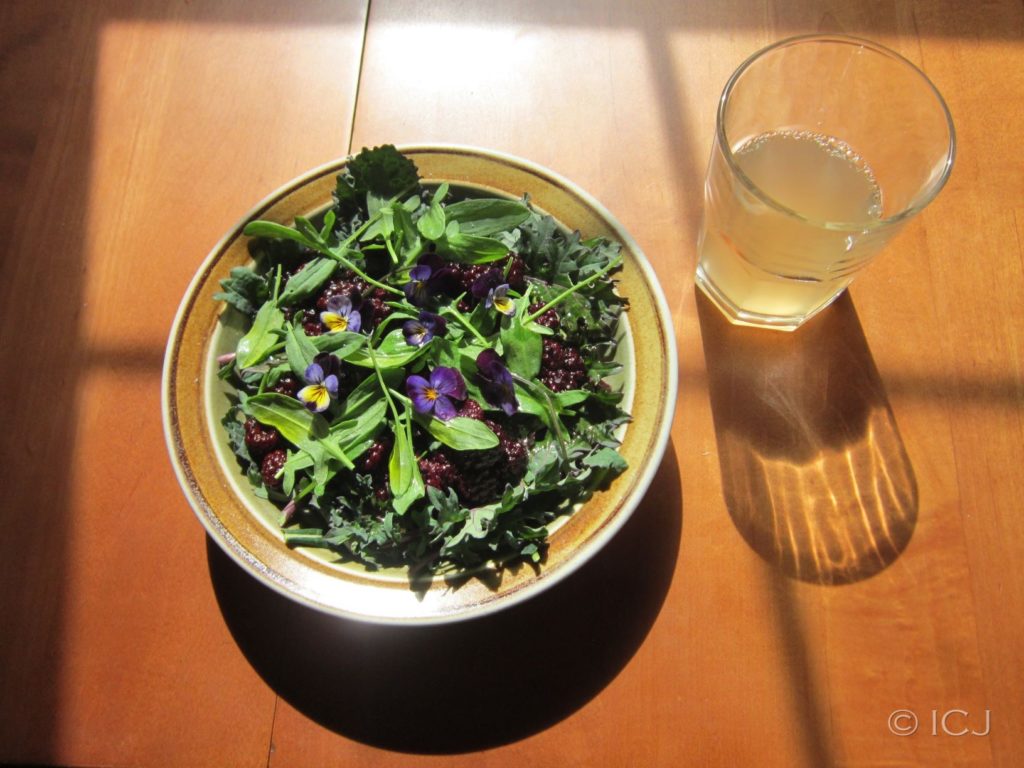
SNACKS: Fruit Leather
Just apple so far, specifically the apple mash that is a byproduct of making cider, previously frozen in gallon bags. One gallon fills several trays in my dehydrator. Ingredients and procedure need work. This first batch was palatable but uninspiring compared to the other snack food at my disposal on a normal day. On Homegrown Day April 1 my hunger level by midafternoon inspired me to eat half a sandwich baggie full.
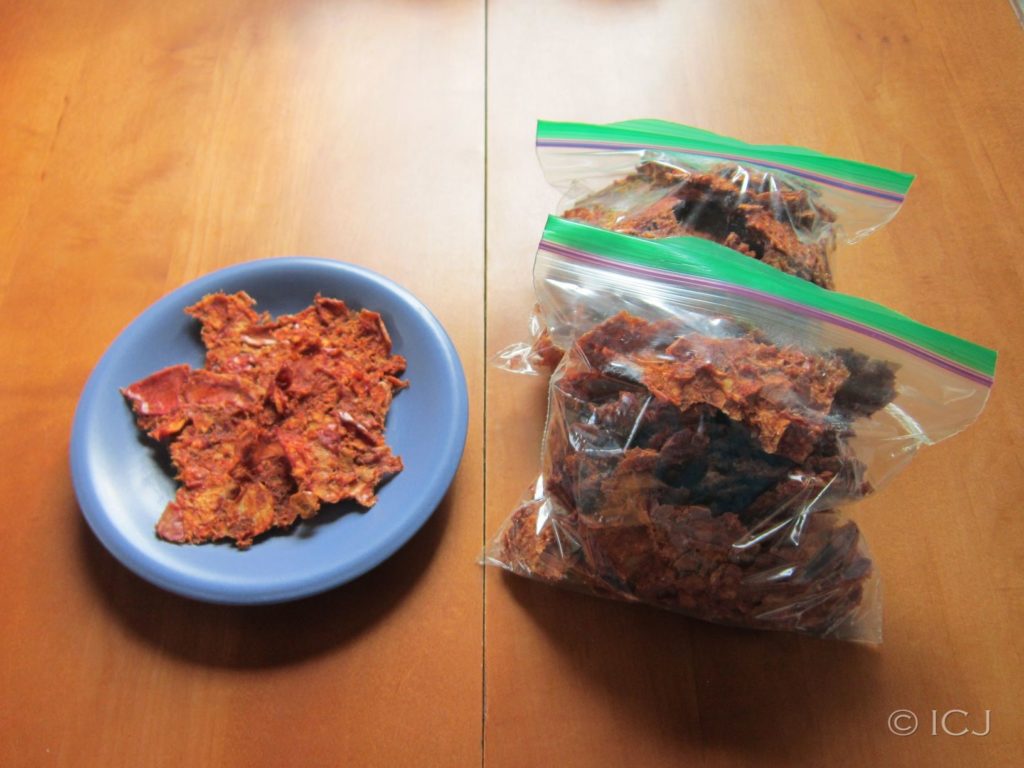
DINNER: Black Beans and Nettle Greens
1/3 c dried black beans. Half my 2020 harvest. (No other legumes survived to 1’ high, let alone maturity.) I started soaking them around noon. The other 1/3 c I am saving for Homegrown Day on May 1 because I won’t have much new yield between now and then, and all of it save the rhubarb will be green. The variety is “Cherokee Trail of Tears,” a sobering reminder of the all the forgotten and otherwise mistreated legacies that made today’s food crops possible, and that no amount of time and wise keeping will fully heal the wounds done on this land.
The shallots were seeded by someone else and came to me via the garden center in town as threadlike sprouts several inches high, just starting to resemble chives. I planted about 60. They doubled in height and grew several new leaves before being decimated by mice and slugs. Shallots, however, are wizards of survival and can resprout from a stump once they have any amount of stored energy underground. They’ll be smaller for the setback but they are still there. Partly because it was too late for the greens I had direct seeded last spring and partly because of the relative cost, culinary value, and storage properties of shallots, they became my first priority for physical defenses and slug patrol. About half survived. Shallots taste like a cross between onions and garlic but are milder and keep better than either.
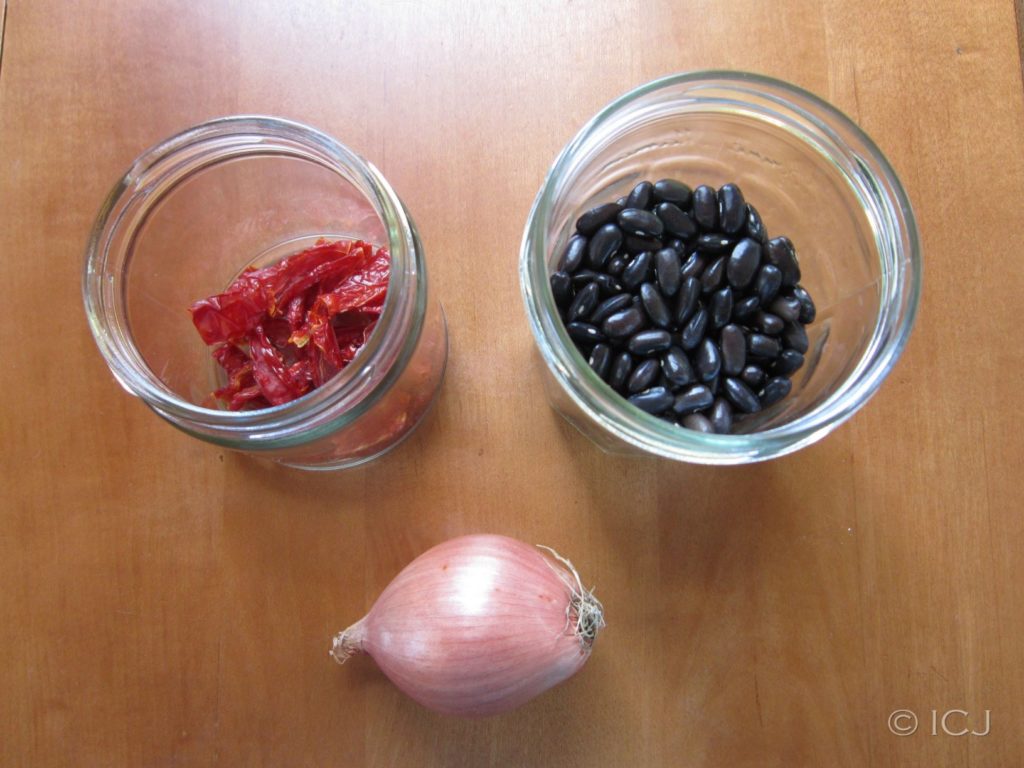
I am grateful for super-thin Atlas gloves for harvesting and prepping nettles. I have a modest population of them (nettles, not Atlas gloves) growing between the easement road and what was once a drainage ditch on my side of the road. Nettles taste the way that cut grass smells. Boiled and salted with a little olive oil, they are respectable fare, with a nutrient density rivaled by few other foods. I garnished them with sun-dried tomatoes. Actually sun-dried on a brown paper bag on a plastic mesh tray on my porch! I did not get enough tomatoes last year to can any. The few weeks I had surplus I bartered with the Cherries and dried the Roma. With an earlier start on the season and my own little greenhouse, I’m hoping this year that will change.
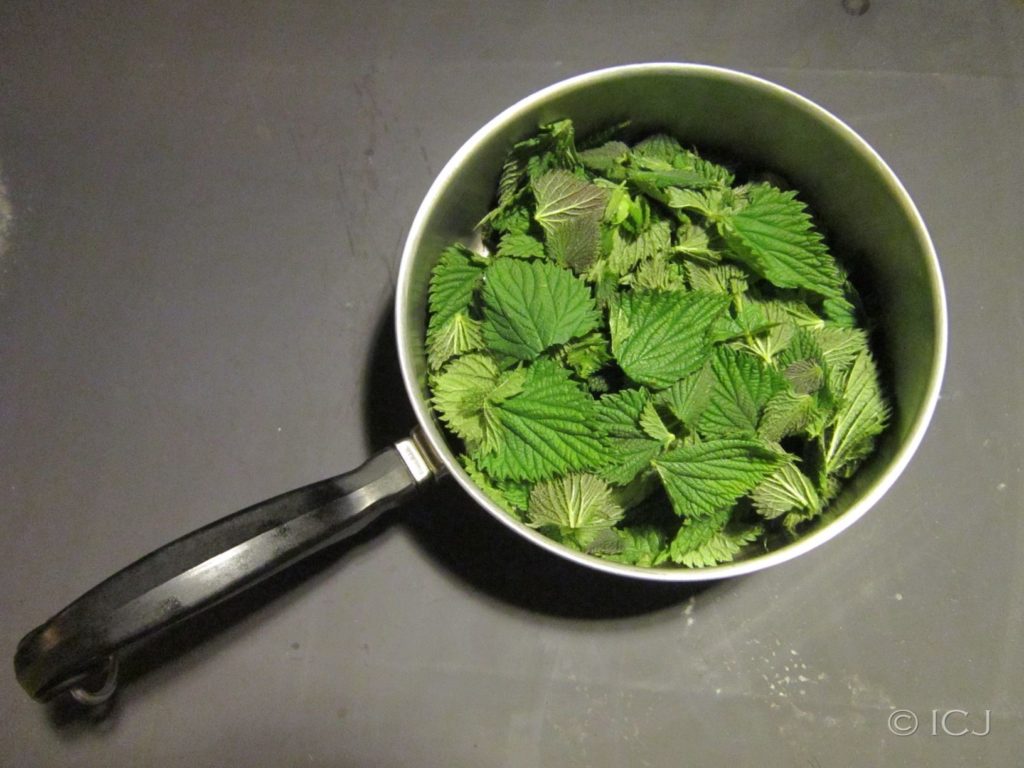
Partly due to hunger and partly due to the freshness and seed and soil quality, those were the most flavorful black beans I’ve ever had, seasoned only with shallots sauteed in olive oil and a little salt. I could’ve eaten triple the portion that I had. My vitamin & mineral to calorie ratio is pretty good on a normal day, certainly better than the average American’s. My first Homegrown food day was nearly all vitamins and minerals, with the deep flavor and color that typically accompany those. Calories, not so much. I have work to do.
Mad props to the pioneers. They didn’t have a pantry full of store-bought food to wake up to the next day. Or a whole year to prep for a day of feeding themselves. Or a chest freezer. I have work to do. I have much to learn. And that is good.
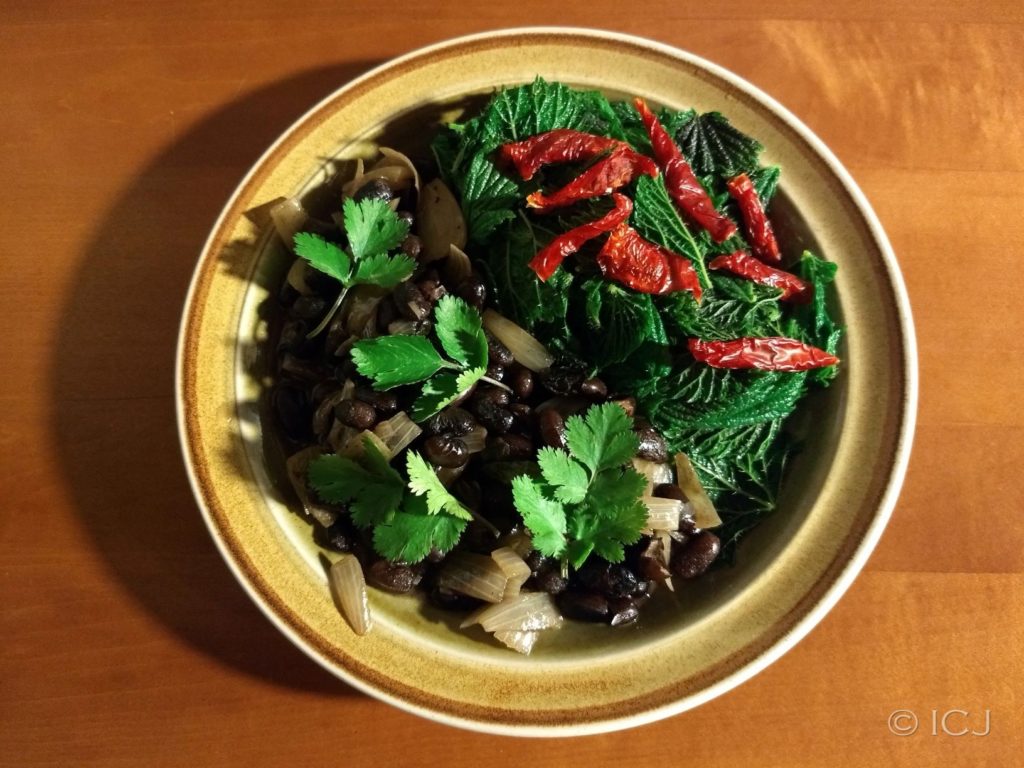
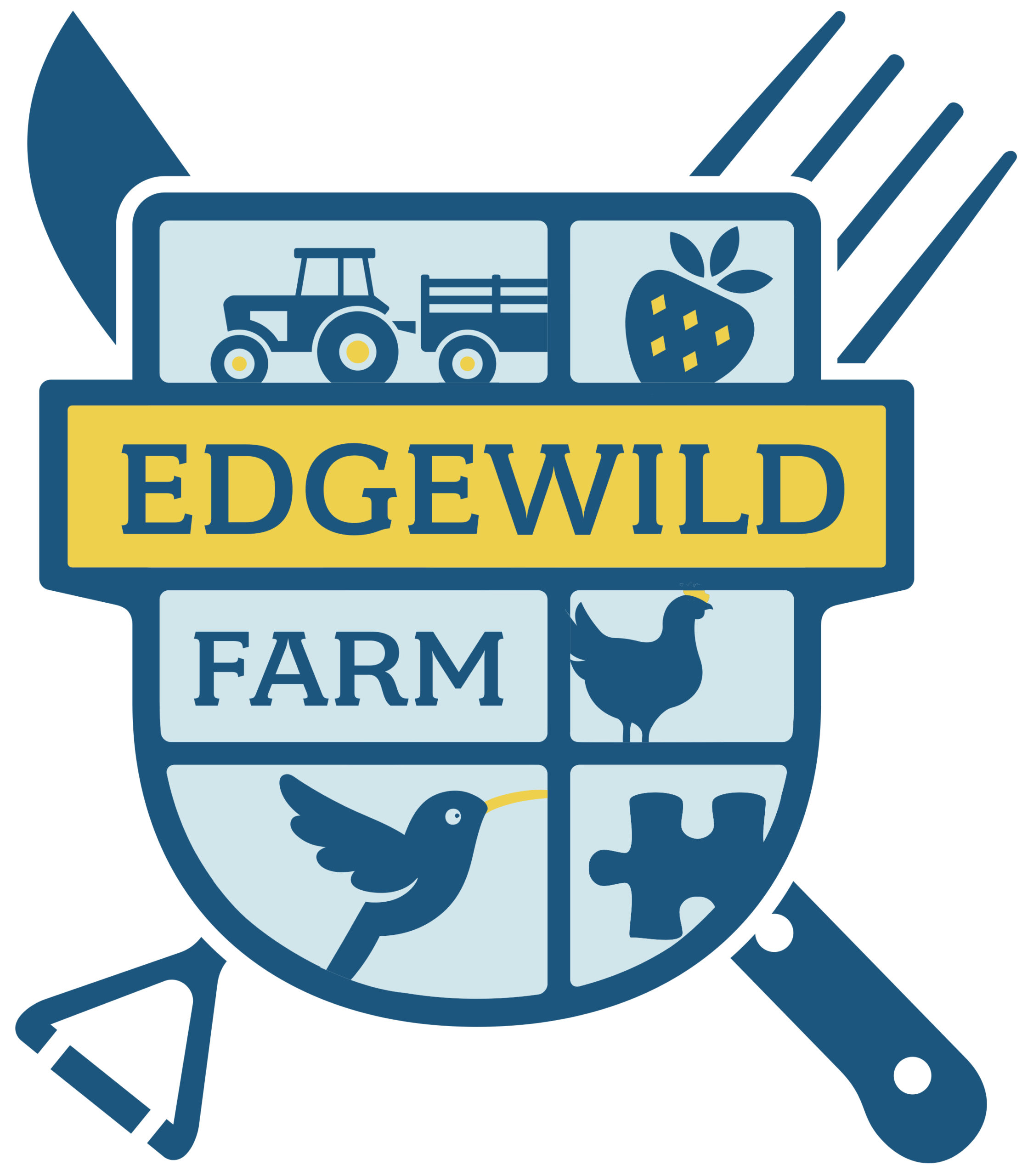
Great post!
Very impressive in so many ways. I’m generally a meat and potatoes guy, but you made your day sound, and look, quite impressively tasty. And nicely blogged. Great to hear you’re doing well.
Thank you! I planted 3 pounds of potatoes and harvested 2 pounds when it should have been at least 15. (Damn the voles!!!) I ate those up by the end of December. I hope to start fishing again (haven’t since I was a child with my dad) and what little red meat eat I can easily acquire by trading with neighbors. No need to raise or hunt it myself. Yesterday evening’s venison burger coming up in the County Foodshed post. I’ll probably get around to publishing that on Saturday.
Beautifully done, Friend. I love this tradition you have started and can’t wait to see how it evolves as you do and as your land embraces you!
So glad you have your own farm. I thoroughly enjoyed your blog and look forward to more. I miss you at the Seattle REI but so happy you are living your real passion.
Thanks, Jim! I miss you guys too. Had no idea March 15 would be my last day at the store. I thought I had one more year. Please invite me to the Apres-Ski shindig if you think of it! Be well.